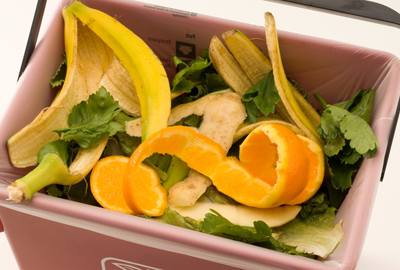
For some, the notion of worms in their home is a bit much. For others, a worm bin under the kitchen sink sounds like a wonderful convenience. If you want to have a worm bin indoors, here are some tips on how to make your own.
Indoor Worm Composting
To compost with worms indoors, all you need are a bin, a drill, bricks, a tray, newspaper, and worms.p>
First, the bin. Indoor worm bins need to be dark, warm, and aerated. Since you’re making your own, choose a container that is opaque and about 10 inches deep. Coffee cans, plastic storage bins, crates, and even dresser drawers can be used.
You will need to poke holes in the sides and bottom of the bin. Use the drill for this, or use a nail or other sharp object to make the holes. Make many small holes rather than a few large ones – you don’t want your worms to wiggle out. Remember, they will have baby worms that can wriggle through small holes. To prevent this from happening, you may want to line your hole-punched bin with nylon.
The compost will need to be kept moist, so you will need some kind of tray under the bin to catch drips as you water it. The easiest method is to set bricks into a drainage container (such as a plastic storage bin or dish tub) and set your compost bin on the bricks.
Then you will need to fill your bin to a depth of about five inches with shredded newspaper. This makes a good start for your compost. Wet the newspaper shreds and add your worms.
What Kind of Worms Work Best?
Most experienced people recommend Red Wigglers or Red Earthworms as the best worm for indoor composting. This type of worm can ingest and break down enormous amounts of kitchen scraps. How many worms you get depends on how many kitchen scraps you generate. One thousand worms (about a pound) will eat half a pound of scraps daily. So you might want to take a week or so before beginning to weigh the average amount of kitchen scraps you generate.
When you’re ready to get your worms, your back yard or local bait shop may be as far as you need to go. If you can’t find them there, look at your local gardening center or online. Many gardening companies sell worms.
Spread your worms over the surface of the wet newspaper and leave the lid off of your container at first. The worms will dig into the newspaper to get away from the light.
Warmth
Remember that worms need warmth. Keep the bin somewhere in your house where the temperature does not get below 55 degrees F.
Feeding Your Worms
Introduce kitchen scraps gradually, working them down into the newspaper at first. Feed them weekly or small amounts daily. Eventually, you can work up to giving them a half pound of food a day (if you have 1000 worms).

